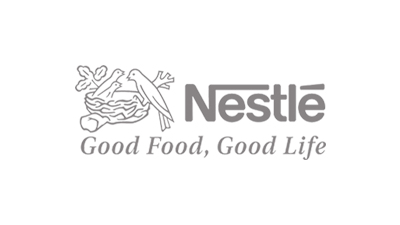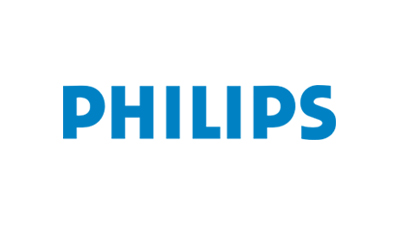A technical textile is a textile product manufactured for non-aesthetic purposes, where function is the primary criterion. Technical textiles include textiles for automotive applications, medical textiles (e.g., implants), geotextiles (reinforcement of embankments), agrotextiles (textiles for crop protection), and protective clothing (e.g., heat and radiation protection for fire fighter clothing, molten metal protection for welders, stab protection and bulletproof vests, and spacesuits). First, over the past couple of years, the demand for technical textiles has been increasing significantly owing to their superior functionality and physical properties and greater research and development. While the technical textiles industry has matured in many respects, the sector continues to grow, spurred on by a myriad of macro-drivers, such as growing populations in developing countries, maturing populations in developed economies, increasing urbanization, higher spending on road and rail infrastructure, increasing air travel in the Middle and Far East, and higher demands for environmental protection. Second, the technical textiles industry is rather separated: there are thousands of manufacturers in the world, and high-end products mainly from United States and western European. In the world wide, giant manufactures mainly distribute in American and Europe. American has a long history and unshakable status in this industry, like DuPont and 3M, both have perfect products. Germany is widely regarded as Europe?s market leader in technical textiles ? around 50%, possibly even more, of the country?s textile output is in such products. In China, the manufactures focus in Zhejiang, Shandong and Henan province, with nonwoven as the main product. Second, many company have several plants, usually close to aimed consumption market, which is most commonly to see in Europe. BTT has production bases in Belgium and Asia, Ahlstrom ha production bases separated in Europe, North America and Asia Pacific. Also, many international companies choose to set up factories in China too, such as Kimberly-Clark and P&G. Third, all manufactures in the world are committed to the improvement of product. Technology always plays the most important role in market performance of technical textiles. The innovation of new technology generates great fortune for giant companies like DuPont and 3M. Nowadays, many traditional textile manufacturers are considering structural change on the part of producers of traditional textiles to become highly technical and specialist manufacturers of high-quality textile products. Fourth, the import and export percent of this industry is not high, because many international manufactures expand their business through building factories or investments. Regionally, United States and Europe are the main exporter of technical textiles, China has been in improvement of its performance in this field, but most of its high end products or fiber has to be imported from developed areas. Fifth, company mergers and acquisitions, and inter-companies cooperation have occurred for development and growth. PGI expanded its market share through the purchasement of Tesalca-Texnovo. As the downstream consumption usually follows with developed and rapid economic growth areas, the developed areas? company prefers investing to underdevelopment regions these years. Sixth, this industry is affected by the economy and policy, so it?s important to put an eye to economic indexes and leaders? prefer. With the global economic recovery, more and more people pay attention to rising environment standards, especially in underdevelopment regions that have a large population and fast economic growth, the need of technical textiles will increase. Seventh, we tend to believe this industry now is close to mature, and the consumption increasing degree will show a smooth curve. On product prices, the slow downward trend in recent years will maintain in the future, as competition intensifies, prices gap between different brands will go narrowing. Similarly, there will be fluctuation in gross margin. Since the COVID-19 virus outbreak in December 2019, the disease has spread to almost 100 countries around the globe with the World Health Organization declaring it a public health emergency. The global impacts of the coronavirus disease 2019 (COVID-19) are already starting to be felt, and will significantly affect the Technical Textiles 3900 market in 2020. COVID-19 can affect the global economy in three main ways: by directly affecting production and demand, by creating supply chain and market disruption, and by its financial impact on firms and financial markets. The outbreak of COVID-19 has brought effects on many aspects, like flight cancellations; travel bans and quarantines; restaurants closed; all indoor events restricted; over forty countries state of emergency declared; massive slowing of the supply chain; stock market volatility; falling business confidence, growing panic among the population, and uncertainty about future. This report also analyses the impact of Coronavirus COVID-19 on the Technical Textiles 3900 industry. Based on our recent survey, we have several different scenarios about the Technical Textiles 3900 YoY growth rate for 2020. The probable scenario is expected to grow by a xx% in 2020 and the revenue will be xx in 2020 from US$ 171460 million in 2019. The market size of Technical Textiles 3900 will reach xx in 2026, with a CAGR of xx% from 2020 to 2026. With industry-standard accuracy in analysis and high data integrity, the report makes a brilliant attempt to unveil key opportunities available in the global Technical Textiles market to help players in achieving a strong market position. Buyers of the report can access verified and reliable market forecasts, including those for the overall size of the global Technical Textiles market in terms of both revenue and volume. Players, stakeholders, and other participants in the global Technical Textiles market will be able to gain the upper hand as they use the report as a powerful resource. For this version of the report, the segmental analysis focuses on sales (volume), revenue and forecast by each application segment in terms of sales and revenue and forecast by each type segment in terms of revenue for the period 2015-2026. Sales and Pricing Analyses Readers are provided with deeper sales analysis and pricing analysis for the global Technical Textiles market. As part of sales analysis, the report offers accurate statistics and figures for sales and revenue by region, by each type segment for the period 2015-2026. In the pricing analysis section of the report, readers are provided with validated statistics and figures for the price by players and price by region for the period 2015-2020 and price by each type segment for the period 2015-2020. Regional and Country-level Analysis The report offers an exhaustive geographical analysis of the global Technical Textiles market, covering important regions, viz, North America, Europe, China and Japan. It also covers key countries (regions), viz, U.S., Canada, Germany, France, U.K., Italy, Russia, China, Japan, South Korea, India, Australia, Taiwan, Indonesia, Thailand, Malaysia, Philippines, Vietnam, Mexico, Brazil, Turkey, Saudi Arabia, UAE, etc. The report includes country-wise and region-wise market size for the period 2015-2026. It also includes market size and forecast by each application segment in terms of sales for the period 2015-2026. Competition Analysis In the competitive analysis section of the report, leading as well as prominent players of the global Technical Textiles market are broadly studied on the basis of key factors. The report offers comprehensive analysis and accurate statistics on sales by the player for the period 2015-2020. It also offers detailed analysis supported by reliable statistics on price and revenue (global level) by player for the period 2015-2020. On the whole, the report proves to be an effective tool that players can use to gain a competitive edge over their competitors and ensure lasting success in the global Technical Textiles market. All of the findings, data, and information provided in the report are validated and revalidated with the help of trustworthy sources. The analysts who have authored the report took a unique and industry-best research and analysis approach for an in-depth study of the global Technical Textiles market. The following manufacturers are covered in this report: DowDuPont Beaulieu Technical Textiles Ahlstrom Techtex Freudenberg Honeywell Johns Manville 3M Global-safety-textiles Kimberly-Clark TWE-Group Alexium International JM-Textile Huntsman Asahi Kasei Fibers Protan Milliken Invista Arville Polymer Group A&E Borgers Don & Low P&G DELFINGEN IBENA Lenzing Tech-Tex Schoeller-textiles Technical Textiles Breakdown Data by Type Agrotech Buildtech Clothtech Geotech Hometech Indutech Medtech Mobiltech Oekotech Technical Textiles Breakdown Data by Application Agriculture Auto industry Electronic Industry Aerospace Medical Industry Achitechive Other
1 Study Coverage 1.1 Technical Textiles Product Introduction 1.2 Market Segments 1.3 Key Technical Textiles Manufacturers Covered: Ranking by Revenue 1.4 Market by Type 1.4.1 Global Technical Textiles Market Size Growth Rate by Type 1.4.2 Agrotech 1.4.3 Buildtech 1.4.4 Clothtech 1.4.5 Geotech 1.4.6 Hometech 1.4.7 In









